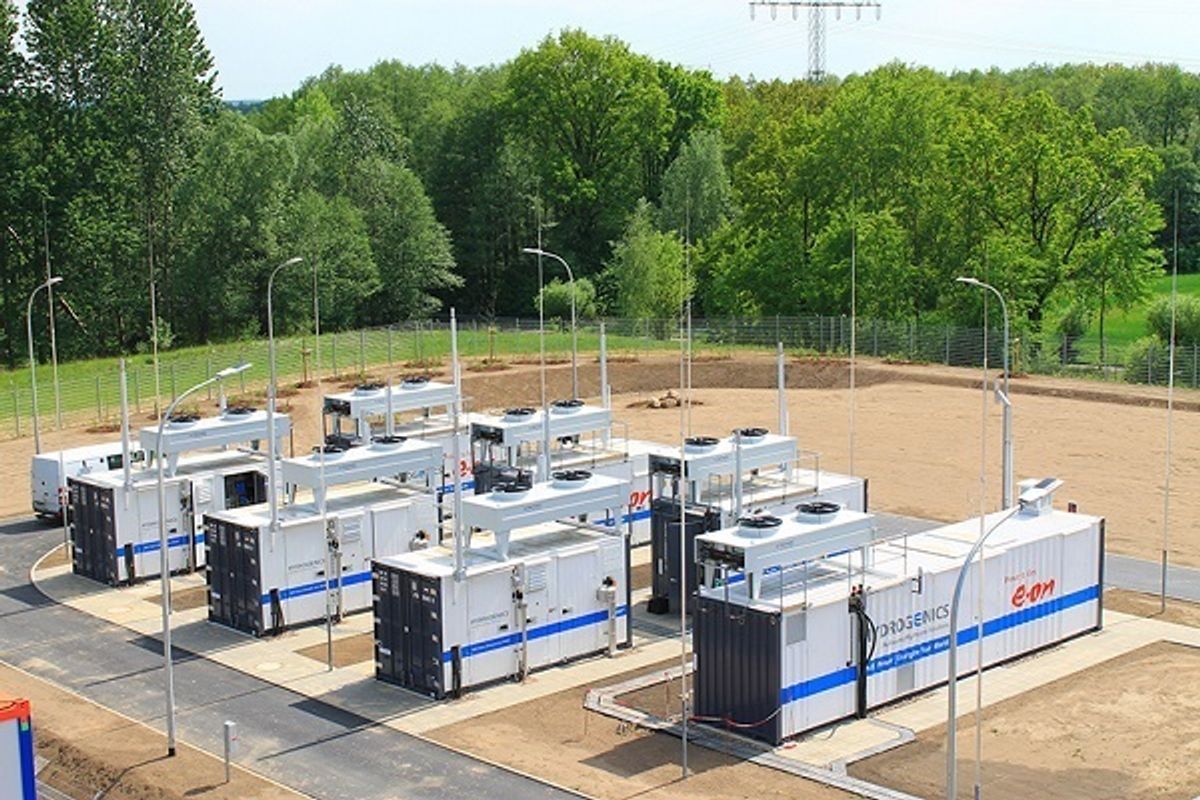For the first time on an industrial scale, hydrogen produced using wind power is being injected into the natural gas grid in Germany. It’s a development that could enhance the value of wind power by making it useful no matter when it is produced.
E.On said the P2G unit in Falkenhagan in eastern Germany, operated in a partnership with Swissgas AG, has a capacity of 2 megawatts and can pump out 360 cubic meters of hydrogen every hour. In a sign of the potential of the technology, its inauguration drew a crowd that included the German economics minister, members of the European parliament and high officials of Brandenburg state.
“One of the biggest challenges of transforming Germany’s energy system is finding ways to integrate the increasing share of intermittent, renewable-source energy,” Economics Minister Philipp Rösler said in the E.on news release. “To ensure that Germany’s power system remains stable and that our economy continues to have the energy it needs, we not only have to rapidly expand energy networks. We also need innovative solutions like the P2G unit here in Falkenhagen.”
What we have in Falkenhagen, really, is a way to store wind power. Instead of turning off the turbines at a nearby wind farm when demand is low (as it can be at night, when the wind tends to blow strongest), or using the power to move water up a hill (effective but site-specific and expensive pumped hydro) or charge a battery (expensive), or try to find a buyer for the power far away (requiring costly transmission), the power is used to turn water into hydrogen by electrolysis. The hydrogen is then shot straight into the area’s natural gas system. displacing a fossil fuel.
What’s especially interesting here is that last step — the use of the hydrogen in the natural gas pipeline. We recently reported on a report commissioned by the U.S. Department of Energy, “Blending Hydrogen into Natural Gas Pipeline Networks: A Review of Key Issues,” in which the authors sound a fairly optimistic note about the possibility of putting the country’s extensive gas pipeline system to work for clean hydrogen’s benefit. They don’t give the idea a 100 percent endorsement — because of the nature of hydrogen, the natural gas system can only take small percentages without extensive reworking — but their review of the issues says that the pluses appeared significant enough to warrant further study. So while the E.on project in Germany is fairly small, it should provide valuable insight that will help guide subsequent approaches with the technology.
Other similar approaches include putting hydrogen produced from excess renewables to work in fuel cells, and reacting it with CO2 from bioenergy plants to produce a carbon neutral methane, sometimes known as “renewable methane” or synthetic methane. This synthetic methane could go directly into the natural gas pipeline without the limitations of hydrogen. A 25-kilowatt demonstration plant using just such a system is operating in Germany.

Shares